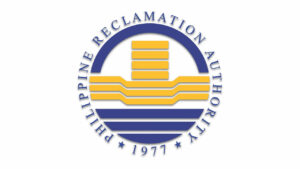SUBSIDIES provided to government-owned and -controlled corporations (GOCCs)fell 9.18% year on year in July, the Bureau of the Treasury (BTr) reported.
The BTr said budgetary support to state-run firms was P9.74 billion in July, against P10.72 billion a year earlier.
Month on month, GOCC subsidies rose 30.69%.
State-owned firms receive monthly subsidies from the National Government to support their daily operations if their revenue is insufficient.
In July, the Philippine Reclamation Authority topped the subsidy list with P4.43 billion or 45.54% of the total. It had been receiving no subsidies since January.
This was followed by the National Irrigation Administration, which received P3.38 billion.
The Philippine Fisheries Development Authority was granted P750 million in subsidies in July.
State-run firms on the subsidy list included the Philippine Heart Center (P184 million), the Philippine Coconut Authority (P142 million), the Philippine Children’s Medical Center (P130 million), the National Kidney and Transplant Institute (P124 million), the Philippine Rice Research Institute (P20 million) and the Cultural Center of the Philippines (P107 million).
Other GOCCs obtaining subsidies of less than P100 million were the Light Rail Transit Authority (P74 million), the Lung Center of the Philippines (P59 million), the Development Academy of the Philippines (P38 million), the Philippine National Railways (P34 million), the National Dairy Authority (P28 million) and the Philippine Institute for Development Studies (P28 million).
Also receiving subsidies were the Center for International Trade Expositions and Missions (P20 million), the People’s Television Network, Inc. (P18 million), the Tourism Infrastructure & Enterprise Zone Authority (P15 million), and the Metropolitan Waterworks and Sewerage System (P14 million), the Aurora Pacific Economic Zone and Freeport Authority (P10 million), the Philippine Institute of Traditional and Alternative Health Care (P10 million), the Southern Philippines Development Authority (P7 million), the Philippine Tax Academy (P5 million), the Philippine Center for Economic Development (P5 million) and the Zamboanga City Special Economic Zone Authority (P4 million).
Receiving no subsidies were the Land Bank of the Philippines, the Small Business Corp., the National Electrification Administration, the National Housing Authority, the National Power Corp., the Bases Conversion Development Authority, the Intercontinental Broadcasting Corp.-13, the Philippine Crop Insurance Corp., the Power Sector Assets and Liabilities Management Corp., the Subic Bay Metropolitan Authority, the Sugar Regulatory Administration and the Tourism Promotions Board.
In the first seven months, GOCC subsidies hit P62.23 billion, down 20.14% from a year earlier.
The Philippine Health Insurance Corp. remains in the process of implementing its restructuring program, the Governance Commission for GOCCs Chairman Marius P. Corpus said.
“It has conducted a comprehensive review and mapping of its organizational structure and staffing pattern. To support this, the Change Management Team for Restructuring and relevant Technical Working Groups (TWGs) were reconstituted to develop and submit the Board-approved Implementation Plan for PhilHealth Restructuring (IPPR),” Mr. Corpus told BusinessWorld.
The Department of Budget and Management has said that PhilHealth is set to receive the top subsidy of any state-run firm at P53.26 billion in the 2026 National Expenditure Program. — Aubrey Rose A. Inosante

